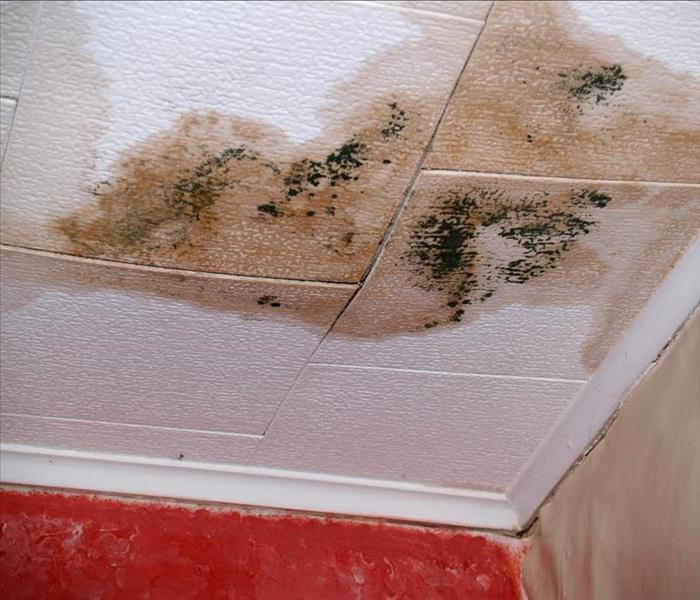4 Common Places To Find Mold in a Commercial Building
6/17/2021 (Permalink)
Common Places To Find Mold Damage In A Commercial Property
Do you have a mold infestation in your Diamond Bar, CA, commercial building? Mold is a sneaky little organism. A few tiny spores can quickly turn into full-on mold growth, followed by the development of a massive infestation. You may not even know it exists until you discover that it's taken over part of your building. Here are some common places to find mold damage in a commercial property.
1. Carpet
Mold spores are practically everywhere, inside and out. It's easy for your shoes or clothes to carry in spores from the outdoors, where they'll ultimately end up on the carpet. Soaked carpet, such as after a flood, probably needs to be replaced. The water can also soak through the padding and even the subfloor. It's impossible to completely dry carpeting, and especially padding before mold begins growing. These materials, once damp, become a perfect place for mold to set up a house.
2. Ceiling Tiles
Ceiling tiles in areas with high humidity or water damage can result in mold growth. Mold can result from a leaky roof or leaky pipes, especially because ceiling tiles typically don't have any ventilation. Unless you see the damage, it could be quite a while before you know there's a problem.
3. Ductwork
Condensation can result when ductwork isn't operating correctly. The dark, wet conditions make it an excellent place for mold to grow and spread. As well, air blows through the ductwork, potentially spreading spores throughout the building. When this happens, it's likely that mold remediation professionals will be required to get it under control.
4. Drywall
Water-damaged drywall is very susceptible to mold because it's porous. Sometimes the mold grows on the back of the drywall, so you won't even know it's there until there's a substantial problem.
Discovering mold growth in your building can be overwhelming. Mold cleanup must be completed as soon as possible for the well-being of your employees and your business.





 24/7 Emergency Service
24/7 Emergency Service
